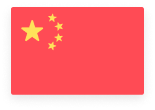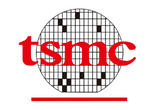Taiwan Semiconductor Manufacturing Co. (TSMC) was founded in 1987 and is headquartered at Taiwan’s Hsinchu Science Park. It is listed on the Taiwan Stock Exchange (TWSE:2330) and its shares are also traded on the New York Stock Exchange under the symbol TSM. TSMC pioneered the pure-play foundry business model with a focus on manufacturing customers’ products.
As of 2024, TSMC served over 520 customers—including major players such as Apple, AMD, NVIDIA, and Qualcomm—and produced more than 11,800 products using 288 different process technologies. The company’s total capacity exceeded 16 million 12-inch equivalent wafers in 2024, supported by its global network of manufacturing sites. These include four advanced 12-inch GIGAFAB® facilities in Taiwan, additional 8-inch and 6-inch fabs, and international operations including TSMC Nanjing in China, TSMC Arizona in the United States, Japan Advanced Semiconductor Manufacturing (JASM) in Japan, and a new project underway in Dresden, Germany.
TSMC earnings figures
Taiwan Semiconductor Manufacturing Co. (TSMC) reported record financial results for the full year 2024, driven by robust demand for high-performance computing and AI-related chips. The company’s revenue for the year reached NT$2.89 tn (approximately $88 bn USD), representing a 34% increase year-on-year.
2025 started strong for the Taiwanese company, with a net profit of net profit of NT$361.56 bn ($10.99 bn) for the first quarter. This is a 60% year-on-year surge, exceeding analyst expectations. Revenue for Q1 climbed 41.6% on the year to NT$839.25 bn.
These results come against the backdrop of a broader correction in semiconductor stocks, as the global tech sector faces increasing uncertainty due to the accelerating decoupling between the U.S. and China. TSMC’s revenue exposure to China has continued to decline amid rising geopolitical tensions. In 2024, the Chinese market contributed just 11% of the company’s total revenue, a significant drop from its 2019 peak of 20%. In Q1 2025, China accounted for only 7%, reflecting the impact of ongoing U.S.-China trade frictions.
TSMC’s key clients, including Nvidia and AMD, have already warned of multi-billion-dollar revenue impacts following tightened U.S. export restrictions on AI chips destined for China. Meanwhile, TSMC’s critical supplier ASML has cautioned that newly proposed U.S. tariffs could further disrupt the global chipmaking supply chain.
However, TSMC leaves its 2025 sales forecast unchanged despite uncertainties from US president Trump’s tariffs. “Moving into second quarter 2025, we expect our business to be supported by strong demand for our industry-leading 3nm and 5nm technologies,” said Wendell Huang, Senior VP and Chief Financial Officer of TSMC when announcing the Q1 results. “While we have not seen any changes in our customers’ behaviour so far, uncertainties and risks from the potential impact from tariff policies exist. We will continue to closely monitor the potential impact on the end market demand, and manage our business prudently,” he added.
As a result, TSMC continues to project revenue growth of 24–26% in 2025 (in USD), compared to the previous year.
TSMC stock movement
In 2024, TSMC’s shares posted solid gains, supported by strong AI-related demand and record financial results. The company’s U.S.-listed ADRs (NYSE: TSM) closed 2024 with an 89.9% gain in a turbulent market, outpacing the broader market. The stock benefited from investor optimism around advanced nodes like 3nm and TSMC’s strategic global expansion.
As of April 16, 2025, TSMC’s market capitalization stood at $786.64 bn USD. The current PE Ratio (TTM) is 21.70.
“When investing in high-technology stocks, there are various considerations to take into account, such as funding and resource issues, R&D competition, among other factors,” said analyst Patrick Liao who publishes on Smartkarma. “We think TSMC is better than its competitors, and this strength supports its earnings, enabling it to invest in R&D and spending.”
Challenges and Outlook for TSMC
While the Taiwanese chip maker benefits from surging demand for semiconductors used in artificial intelligence applications, one of the most pressing challenges is the deepening technological and economic decoupling between the United States and China. Export restrictions on AI-related chips and potential tariff escalations have created uncertainty for both customers and suppliers.
Another challenge is the capital intensity of advanced semiconductor manufacturing. TSMC plans to invest a record capex of $38-42 bn in 2025. While this supports long-term growth, it places pressure on margins and exposes the company to cyclical demand fluctuations. Global chip oversupply or delays in AI adoption could weigh on near-term returns.
That said, TSMC’s outlook remains structurally positive. Chairman C.C. Wei recently reiterated the company’s forecast in January, signalling confidence despite global headwinds.
“Supported by our technology leadership and broad customer base, we are confident we can continue to outperform the industry growth. We expect 2025 to be another strong growth year for TSMC, and forecast our full-year revenue to increase by close to mid-20s% in US dollar term,” he said.


 Australia
Australia China
China India
India Indonesia
Indonesia Japan
Japan Malaysia
Malaysia Philippines
Philippines Singapore
Singapore South Korea
South Korea Taiwan
Taiwan Thailand
Thailand Vietnam
Vietnam

